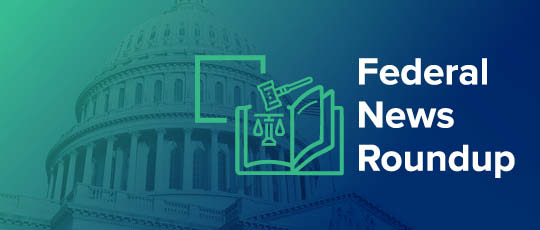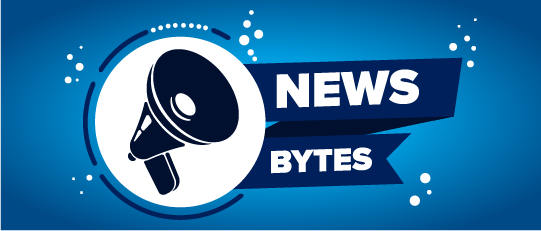For WorldatWork Members
- Considering Conjoint Analysis? Here’s How to Leverage It for TR, Workspan Daily Plus+ article
- How Qualitative and Quantitative Data Can Influence Benefits Design, Workspan Daily Plus+ article
- Strategic HR Analytics: Driving Business Performance, Journal of Total Rewards article
- People Analytics Study, research
For Everyone
- Conjoint Analysis: What It Is and Why TR Should Consider Using It, Workspan Daily article
- Improve Workforce Engagement by Measuring the Right Analytics, Workspan Daily article
- How to Source and Analyze Data to Increase Business Insights and Impact, on-demand webinar
- Powerful Decision-Making with HR Metrics and Analytics, on-demand webinar
Employers collectively pour $3 trillion each year into benefits programs for their workers — but due to a lack of employee understanding or utilization and outdated or clunky program design, those organizations are finding that the benefits investment often isn’t generating expected returns.
Only 26% of employees are “very satisfied” with their benefits, according to recent research from benefits technology company Nayya — leading to 37% higher absenteeism, 18% lower productivity, 15% lower profitability and significantly increased likelihood of attrition.
“These numbers point to a deeper problem: a disconnect between what’s offered and what employees actually need or understand,” said Sarah Liebel, the president and chief operating officer at Nayya. “Too often, workers are left to make high-stakes decisions without the support or context required to make informed choices. That can lead to missed savings, like skipping an employer-matched HSA [health savings account], or delayed care when someone avoids treatment because they don’t understand their coverage.”
That disconnect often leads to financial difficulties for workers; Nayya found that 40% of surveyed employees said their employer’s insurance plans are too expensive, 20% can’t handle a $4,500 medical emergency and 25% would need to take out a loan to cover unexpected medical costs.
Access a bonus Workspan Daily Plus+ article on this subject:
Why the Disconnect?
Nayya points to two factors inhibiting employee use of benefits in a way that’s advantageous for both employees and the employers investing in those benefits: underutilization or misuse, and a lack of understanding.
On the utilization side, Nayya research found:
- 70% of employees keep the same benefits from year to year — despite life changes that may make new benefits more relevant.
- Only 14% actively seek new benefits options during annual enrollment.
- 26% of workers in a high-deductible health plan don’t use the associated HSA.
- 64% of those using an HSA don’t take advantage of its long-term investment potential.
Then, there’s the lack of understanding:
- 70% of polled employees don’t understand hospital indemnity, accident and critical illness insurance.
- 50% can’t explain the intricacies of 401(k)s, HSAs or flexible spending accounts, or how these benefits work.
- While employers annually spend an average of $16,501 per employee on health coverage, only 10% of employees understand that value; 25% believe their employer spends only $1,000 a year on their health benefits.
- 40% of employees don’t recognize health insurance as part of their total compensation, while 48% don’t consider 401(k) or 403(b) plans — and 68% don’t see supplemental insurance — as a component of their compensation.
“This lack of awareness and perceived irrelevance leads to underutilization and lost value — not just for the employee but for the employer footing the bill,” Liebel said. “Without meaningful engagement, even the most generous benefits packages can fail to deliver the outcomes companies are hoping for, such as improved retention, productivity and well-being.”
Enter, cost-benefit analysis.
Can Cost-Benefit Analysis Help?
Often cited as a way to measure the viability of a business strategy, project or product feature, cost-benefit analysis can serve as a useful tool for total rewards professionals. The purpose is to identify the costs associated with a project or idea and the benefits it offers, culminating in a ratio that sheds insight on if the benefits outweigh the costs, or vice versa. In this HR/total rewards case, though, rather than a product or new business initiative, the item you’re analyzing is an employee benefit program.
“In the human resources world, it’s enlightening to look at benefits from a consumer lens,” said John Boudreau, the professor emeritus of management and organization at the University of Southern California’s Marshall School of Business, and a senior research scientist at the school’s Center for Effective Organizations. “Step back and think of workers as customers. Consider a benefit like a product feature — it needs to be ‘offerable’ at a price that doesn’t make it economically infeasible.”
When approached thoughtfully, performing cost-benefit analysis on an employee benefit can help you accomplish various goals, said Boudreau as well as Sean Luitjens, the general manager of total rewards at people analytics company Visier. Outputs may include the ability to:
- Better communicate to employees all the benefits available to them — and the full value of their total rewards package;
- Identify rewards programs that are not worth keeping because of cost and lack of value to employees;
- Find ways to make worthwhile rewards programs more cost-effective; and/or,
- Determine that a particular reward is worth keeping, even if it doesn’t appear to be on paper — and communicate that finding to the chief financial officer.
“A cost-benefit analysis is an opportunity to align your company’s employee personas to the benefits that are out there,” Luitjens said. “When you go through this process, you can really align what is valuable to the people you hire and want to keep, and offer that to them.”
Editor’s Note: Additional Content
For more information and resources related to this article, see the pages below, which offer quick access to all WorldatWork content on these topics:







